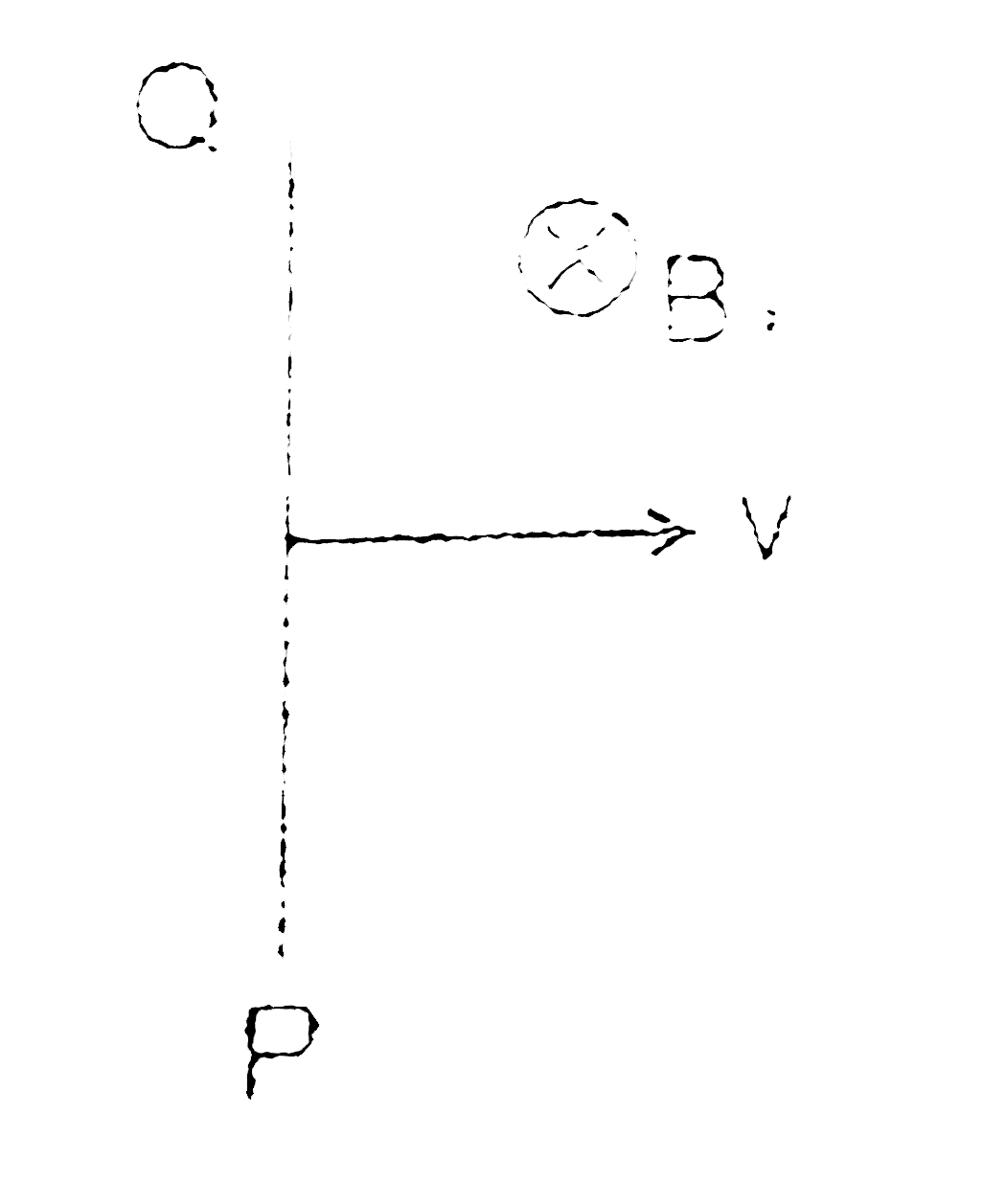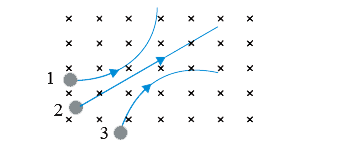A metallic metre sitck moves with a velocity of 2 ms ^(-1) in a direction perpendicular to its length and perpendicular to a uniform magnetic field of magnitude 0.2 T. Find the emf indcued between the ends of the stick.
To find the induced EMF between the ends of a metallic meter stick moving in a magnetic field, we can follow these steps:
Step 1: Identify the given values
- Velocity of the meter stick, V=2m/s
- Length of the meter stick, L=1m (since it is a meter stick)
- Magnetic field strength, B=0.2T
Step 2: Understand the orientation
The problem states that the meter stick is moving perpendicular to its length and also perpendicular to the direction of the magnetic field. This means that the angle between the velocity vector, the length of the stick, and the magnetic field is 90∘.
Step 3: Use the formula for induced EMF
The formula for the induced EMF (E) in a conductor moving through a magnetic field is given by:
E=B⋅V⋅L
where:
- E is the induced EMF,
- B is the magnetic field strength,
- V is the velocity of the conductor,
- L is the length of the conductor.
Step 4: Substitute the values into the formula
Now, substituting the known values into the formula:
E=0.2T⋅2m/s⋅1m
Step 5: Calculate the induced EMF
Calculating the above expression:
E=0.2⋅2⋅1=0.4V
Conclusion
The induced EMF between the ends of the stick is 0.4V.
---
- Velocity of the meter stick, V=2m/s
- Length of the meter stick, L=1m (since it is a meter stick)
- Magnetic field strength, B=0.2T
The problem states that the meter stick is moving perpendicular to its length and also perpendicular to the direction of the magnetic field. This means that the angle between the velocity vector, the length of the stick, and the magnetic field is 90∘.
The formula for the induced EMF (E) in a conductor moving through a magnetic field is given by:
E=B⋅V⋅L
where:
- E is the induced EMF,
- B is the magnetic field strength,
- V is the velocity of the conductor,
- L is the length of the conductor.
Now, substituting the known values into the formula:
E=0.2T⋅2m/s⋅1m
Calculating the above expression:
E=0.2⋅2⋅1=0.4V
The induced EMF between the ends of the stick is 0.4V.
Topper's Solved these Questions
- BOOK - HC VERMA ENGLISHCHAPTER - ELECTROMAGNETIC INDUCTIONEXERCISE - Questions for short answer9videos
ELECTROMAGNETIC INDUCTION
- BOOK - HC VERMA ENGLISHCHAPTER - ELECTROMAGNETIC INDUCTIONEXERCISE - Objective 210videos
ELECTROMAGNETIC INDUCTION
- BOOK - HC VERMA ENGLISHCHAPTER - ELECTRIC FIELD AND POTENTIALEXERCISE - Objective 27videos
ELECTRIC FIELD AND POTENTIAL
- BOOK - HC VERMA ENGLISHCHAPTER - ELECTROMAGNETIC WAVESEXERCISE - Exercise8videos
ELECTROMAGNETIC WAVES
Similar Questions
A metallic wire PQ of length 1cm moves with a velocity of 2m/s in a direction perpendicular to its length and perpendicular to a uniform magnetic field of magnitude 0.2T.Find the emf induced between the ends of the wire.Which end will be positively charged.
 View Solution
View SolutionA conducting rod of unit length moves with a velocity of 5m/s in a direction perpendicular to its length and perpendicular to a uniform magnetic field of magnitude 0.4T. Find the emf induced between the ends of the stick.
View SolutionParticles 1, 2 and 3 are moving perpendicular to a uniform magnetic field, then particle
 View Solution
View SolutionA metallic metre stick translates in a direction making an angle of 60∘ with its length.The plane of motion is perpendicular to a uniform magnetic field of 0.1T that exists in the space.Find the emf induced between the ends of the rod if the speed of translation is 0.2m/s.
View SolutionA metal rod of length 2 m is rotating with an angualr velocity of 100rads−1 in plane perpendicular to a uniform magnetic field of 0.3 T. The potential difference between the ends of the rod is
View SolutionA wire of length 10cm translates in a direction making an angle of 60∘ with its length. The plane of motion is perpendicular ot a uniform magnetic field of 1.0 T that exists in the space. Find the emf induced between the ends of the rod if the speed of translation of 20 cm s^(-1).
View SolutionA wire of length 10cm translates in a direction making an angle of 60∘ with its length. The plane of motion is perpendicular ot a uniform magnetic field of 1.0 T that exists in the space. Find the emf induced between the ends of the rod if the speed of translation of 20cms−1.
View SolutionA 20 cm long conducting rod is set into pure translation with a uniform velocity of 10cm s ^(-1) perpendicular to its length. A uniform magnetic field of magnitude 0.10 T exists in a direction perpendicular to the plane of motion. Find emf developed in the rod.
View SolutionA proton is projected with a velocity of 3X106ms−1 perpendicular to a uniform magnetic field of 0.6 T. find the acceleration of the proton.
View SolutionA metal rod moves at a constant velocity in a direction perpendicular to its length. A constant, uniform magnetic field exists in space in a direction perpendicular to the rod as well as its velocity. Select the correct statements(s) from the following
View Solution

